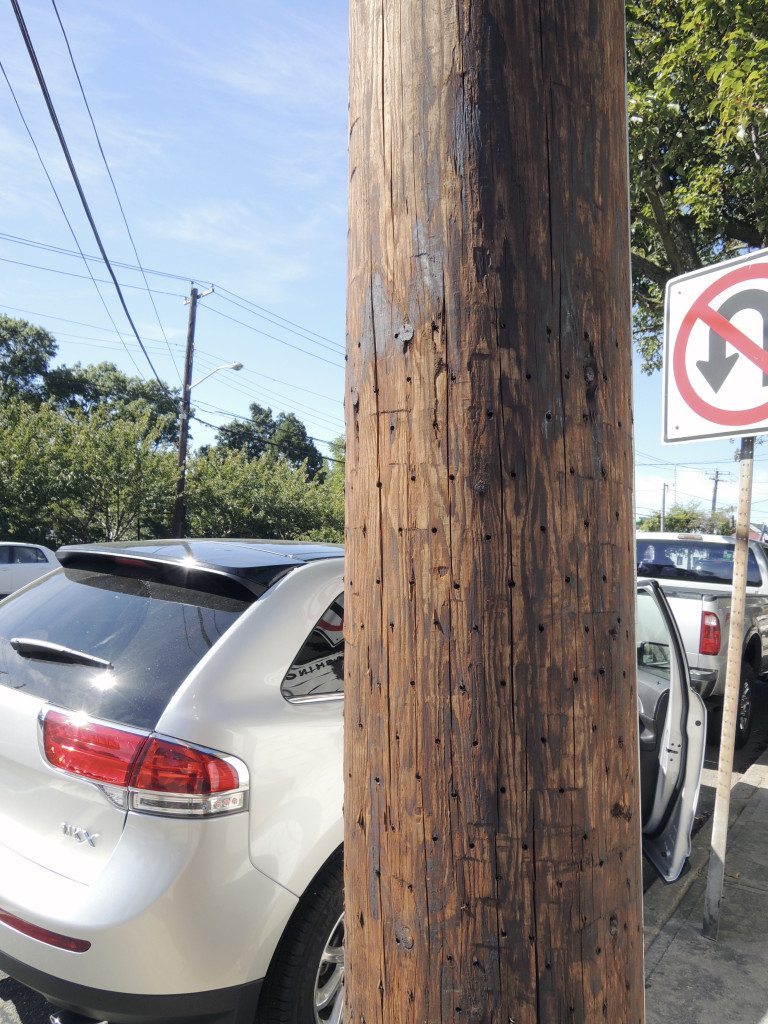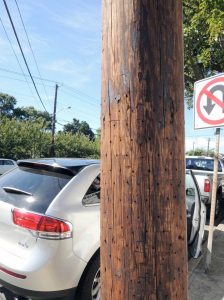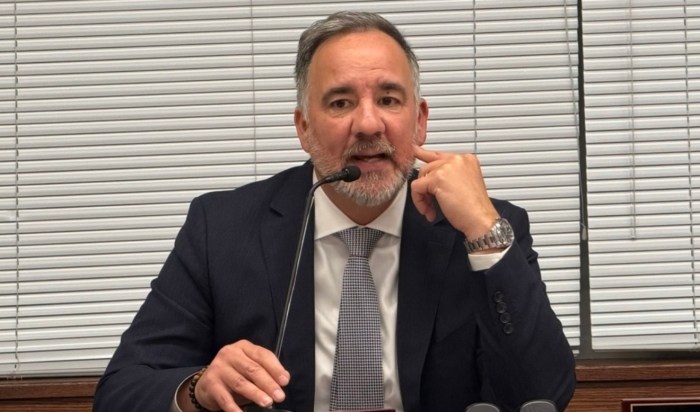The Town of North Hempstead has thrown down the gauntlet against PSEG LI over the chemical that is used to treat utility poles.
Under a law the town board adopted last week, utilities can be fined if they do not note that poles have been treated with the chemical Pentachlorophenol, or penta, which the town says is a dangerous substance.
The requirement is that every fourth pole treated with penta carry a warning sign that says: “This pole contains a hazardous chemical. Avoid prolonged direct contact with this pole. Wash hands or other exposed areas thoroughly if contact is made.”
The penalty after a 30-day notice period is $500 a day until the utility puts the sign up.
The likelihood that PSEG LI will comply appears slim. In an editorial meeting at Anton Media Group’s Mineola headquarters in late August, the utility’s Long Island President David Daly, who knew the town was considering the measure, said: “We don’t put signs up on poles.”
Town Supervisor Judi Bosworth’s response: “Then we are going to have to deal with the fact that they don’t comply with the law.”
The comments could set up a showdown, possibly in court, with PSEG saying penta is a preservative used by utilities across the country and the town calling it a hazardous substance.
The penta issue is one of the latest the town has undertaken to try and get PSEG to be a little more cooperative with its projects. It comes after the utility this year installed 210 unsightly 80- and 85-foot poles, running from Port Washington, through Manhasset, and into Great Neck, rankling the communities, as well as their legislative body.
The town also last week passed legislation meant to prevent utility poles from standing next to each other for an indefinite period of time.
It is questionable whether the town will have to enforce this law in regard to the so-called double poles that were left after PSEG’s project because Daly told the Port News they would be out by the end of this year. The legislation gives each entity with wires on the old poles 30 days to remove them, with the process done in succession, and the last entity gets another 30 days to get the poles down. In the case of the PSEG project it was the utility, and now Cablevision and Verizon that have wires on the old poles.
“If, in fact, [Daly] fulfills his commitment to have the poles out by the end of the year, then it wouldn’t require the town to enforce the penalties included in the new legislation,” Bosworth said.
Under the new law, the town can assess a $500 a day fine for each pole that is left after the warning period. If the town is already fining a utility or telecom, and that entity leaves a pole or poles in another area, it can be fined $1,000 each day for that area. The same fines go for damaged poles, although only 15 days is given to replace them.
On top of these so-called criminal penalties, the town may levy civil penalties in the amount of $500 a day.
The town is also requiring each utility to get a permit and pay a fee to be determined by the town board for each new pole going in going forward.
The utility and telecoms’ activities will be policed by the superintendent of highways.
The legislation came after three public hearings during the summer, in which amendments were made and there was input from PSEG.




































